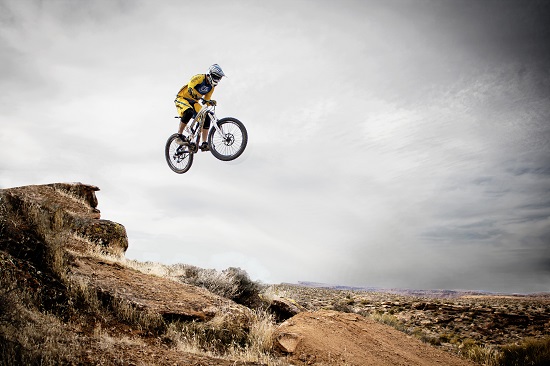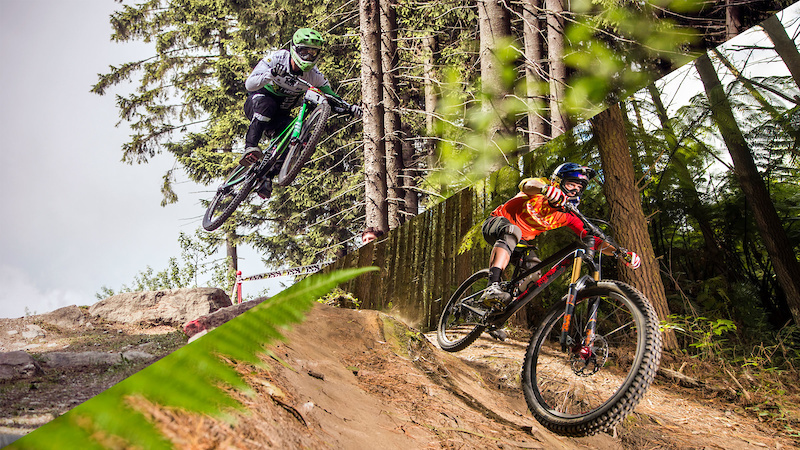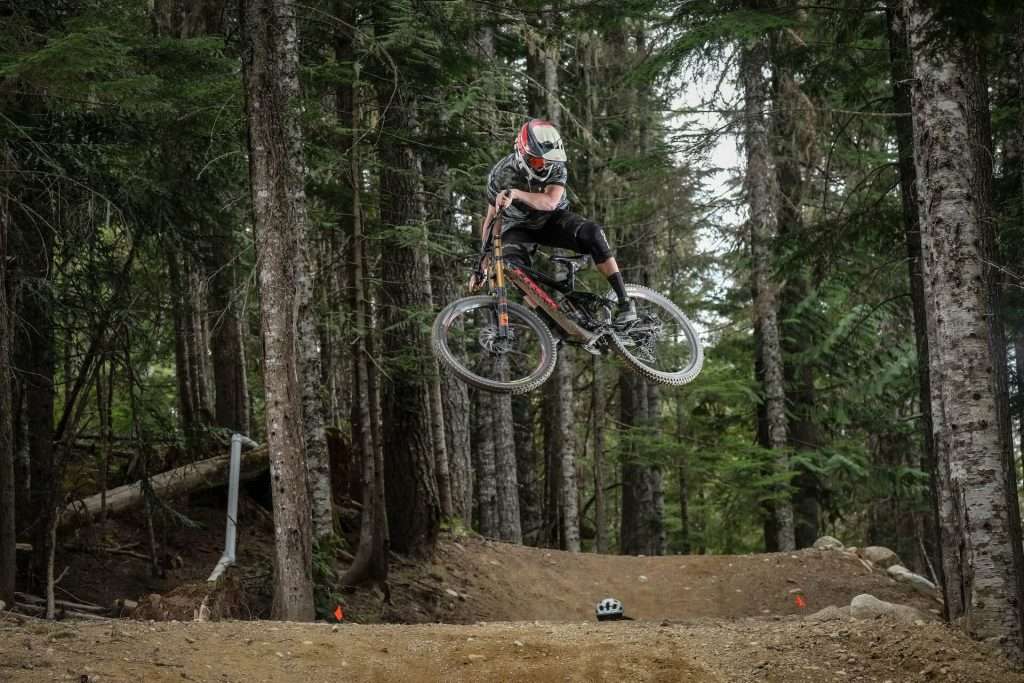Understanding the Key Differences Between Downhill and Enduro Bikes
Mountain biking is a diverse sport, with various disciplines and riding styles. Two popular options, downhill and enduro bikes, cater to distinct riding styles and terrains. While both types of bikes are designed for off-road adventures, they differ significantly in design, features, and riding style. Understanding these differences is crucial in selecting the perfect bike for your mountain biking needs.
Downhill bikes are built for speed and aggression, featuring slack head angles, long travel suspension, and aggressive geometry. These bikes thrive in steep, technical terrain, where riders prioritize speed and thrill-seeking. On the other hand, enduro bikes strike a balance between speed and agility, with shorter travel suspension, steeper head angles, and more agile geometry. Enduro bikes excel in varied terrain, where riders need a balance of speed and maneuverability.
Choosing the right bike for your riding style and terrain can significantly impact your overall riding experience. A downhill bike may not be the best choice for a rider who prioritizes agility and maneuverability, just as an enduro bike may not be suitable for a rider who craves speed and thrill-seeking. When deciding between a downhill vs enduro bike, it’s essential to consider your riding style, terrain, and personal preferences. By doing so, you can unlock your full potential on the trails and enjoy a more exhilarating mountain biking experience.
How to Determine Your Riding Style and Preferences
Before choosing between a downhill and enduro bike, it’s essential to assess your riding style and preferences. This involves evaluating your terrain, speed, and technical difficulty preferences. Ask yourself: Do you prefer riding on steep, technical trails or flowing, smooth singletrack? Are you comfortable with high speeds or do you prefer a more leisurely pace? Answering these questions will help you determine which type of bike best suits your needs.
Identifying your strengths and weaknesses as a rider is also crucial. Are you confident in your ability to navigate tight switchbacks or do you struggle with cornering? Do you have the skills to tackle steep drop-offs or do you prefer more gradual descents? Understanding your abilities will help you choose a bike that complements your riding style and terrain preferences.
Consider keeping a riding journal or log to track your progress and identify patterns in your riding. This will help you pinpoint areas for improvement and provide valuable insights into your riding style. Additionally, seeking feedback from experienced riders or taking a skills clinic can help you refine your skills and better understand your riding preferences.
By taking the time to assess your riding style and preferences, you’ll be better equipped to make an informed decision when choosing between a downhill vs enduro bike. Remember, the right bike can make all the difference in your riding experience, so take the time to get it right.
The Downhill Bike: Built for Speed and Aggression
Downhill bikes are designed for riders who crave speed and thrill-seeking. These bikes feature slack head angles, typically between 62-65 degrees, which provide stability at high speeds and allow riders to tackle steep, technical terrain with confidence. Long travel suspension, often exceeding 200mm, absorbs the impact of rough landings and enables riders to maintain speed through rough sections.
The aggressive geometry of downhill bikes, including a lower bottom bracket and longer wheelbase, provides exceptional stability and control at high speeds. This design allows riders to push the limits of speed and aggression, making them ideal for riders who frequent bike parks, downhill racing, and extreme terrain.
The advantages of downhill bikes are clear: they offer unparalleled speed and control in extreme terrain, making them the perfect choice for riders who prioritize thrill-seeking and adrenaline-fueled rides. However, this comes at the cost of increased weight and decreased agility, making them less suitable for riders who need to navigate tight, technical trails or prioritize efficiency.
When considering a downhill bike, riders should prioritize features such as suspension travel, wheel size, and frame design. A bike with a slack head angle, long travel suspension, and aggressive geometry will provide the speed and control needed to tackle the most demanding terrain. For riders who live for the rush of downhill riding, a downhill bike is the perfect choice.
The Enduro Bike: A Balance of Speed and Agility
Enduro bikes are designed for riders who need a balance of speed and maneuverability. These bikes feature shorter travel suspension, typically between 150-180mm, which provides a more responsive and agile ride. Steeper head angles, often between 65-68 degrees, enable riders to tackle tighter, more technical trails with ease.
The more agile geometry of enduro bikes, including a higher bottom bracket and shorter wheelbase, allows riders to quickly change direction and navigate complex trail features. This design makes them ideal for riders who frequent technical, singletrack trails and need a bike that can handle a variety of terrain.
The advantages of enduro bikes are clear: they offer a perfect balance of speed and agility, making them suitable for riders who need to tackle a wide range of terrain and trail types. However, this comes at the cost of reduced stability at high speeds, making them less suitable for riders who prioritize downhill racing or extreme terrain.
When considering an enduro bike, riders should prioritize features such as suspension travel, wheel size, and frame design. A bike with shorter travel suspension, steeper head angles, and more agile geometry will provide the balance of speed and maneuverability needed to tackle technical trails. For riders who need a bike that can handle everything from flowy singletrack to technical climbs, an enduro bike is the perfect choice.
In the debate of downhill vs enduro bike, enduro bikes offer a unique solution for riders who need a bike that can do it all. By providing a balance of speed and agility, enduro bikes enable riders to tackle a wide range of terrain and trail types, making them an excellent choice for many mountain bikers.
Comparing the Key Features of Downhill and Enduro Bikes
When choosing between a downhill and enduro bike, it’s essential to understand the key features that set these bikes apart. Here’s a side-by-side comparison of the main features of downhill and enduro bikes:
Suspension Travel: Downhill bikes typically feature longer travel suspension, often exceeding 200mm, to absorb the impact of rough landings and high-speed descents. Enduro bikes, on the other hand, feature shorter travel suspension, usually between 150-180mm, to provide a more responsive and agile ride.
Head Angle: Downhill bikes have slack head angles, typically between 62-65 degrees, to provide stability at high speeds and enable riders to tackle steep, technical terrain. Enduro bikes have steeper head angles, often between 65-68 degrees, to improve agility and maneuverability on tight, technical trails.
Wheel Size: Downhill bikes often feature 27.5-inch wheels to provide a more stable and confident ride at high speeds. Enduro bikes may feature 27.5-inch or 29-inch wheels, depending on the rider’s preference and the type of terrain they’ll be tackling.
Frame Design: Downhill bikes have a more aggressive geometry, with a lower bottom bracket and longer wheelbase, to provide exceptional stability and control at high speeds. Enduro bikes have a more agile geometry, with a higher bottom bracket and shorter wheelbase, to enable quick changes in direction and improved maneuverability.
By understanding these key differences, riders can make an informed decision about which type of bike best suits their riding style and preferences. Whether you prioritize speed and aggression or agility and maneuverability, there’s a downhill or enduro bike designed to meet your needs.
In the debate of downhill vs enduro bike, it’s clear that each type of bike has its strengths and weaknesses. By considering the key features of each bike, riders can choose the perfect bike for their mountain biking adventures.
Real-World Examples: The Trek Session vs the Santa Cruz Bronson
To illustrate the differences between downhill and enduro bikes, let’s take a closer look at two real-world examples: the Trek Session and the Santa Cruz Bronson.
The Trek Session is a downhill bike designed for speed and aggression. With its slack head angle of 63.5 degrees and 210mm of travel suspension, this bike is built to tackle the toughest, most technical terrain. The Session’s aggressive geometry and long wheelbase provide exceptional stability at high speeds, making it a top choice for downhill racers and thrill-seekers.
In contrast, the Santa Cruz Bronson is an enduro bike designed for riders who need a balance of speed and agility. With its steeper head angle of 65.5 degrees and 160mm of travel suspension, this bike is perfect for tackling technical trails with tight switchbacks and steep climbs. The Bronson’s more agile geometry and shorter wheelbase enable riders to quickly change direction and navigate complex trail features.
When comparing these two bikes, it’s clear that the Trek Session is designed for pure speed and aggression, while the Santa Cruz Bronson is designed for riders who need a balance of speed and maneuverability. By understanding the strengths and weaknesses of each bike, riders can make an informed decision about which type of bike best suits their riding style and preferences.
In the debate of downhill vs enduro bike, these real-world examples highlight the key differences between these two types of bikes. By considering the design and features of each bike, riders can choose the perfect bike for their mountain biking adventures.
Conclusion: Choosing the Right Bike for Your Mountain Biking Adventures
In conclusion, choosing the right mountain bike for your riding style and preferences is crucial for an enjoyable and successful mountain biking experience. Downhill and enduro bikes are two distinct types of bikes, each designed to cater to specific riding styles and terrain.
When deciding between a downhill vs enduro bike, it’s essential to consider your riding style, terrain, and personal preferences. If you prioritize speed and aggression, a downhill bike may be the perfect choice. However, if you need a balance of speed and agility, an enduro bike could be the way to go.
Before making a purchase, it’s recommended to test ride both types of bikes to get a feel for their unique characteristics and features. This will help you make an informed decision and ensure you’re getting the right bike for your mountain biking adventures.
Remember, the right bike can make all the difference in your riding experience. By understanding the key differences between downhill and enduro bikes, you can choose a bike that complements your riding style and terrain, leading to a more enjoyable and rewarding mountain biking experience.
Final Thoughts: Considering Your Budget and Upgrades
When choosing between a downhill vs enduro bike, it’s essential to consider your budget and upgrade options. Both types of bikes can range from affordable to very expensive, depending on the components and features.
Before making a purchase, prioritize your needs and identify the components that are most important to you. If you’re a speed enthusiast, you may want to invest in a high-performance downhill bike with top-of-the-line suspension and brakes. On the other hand, if you’re looking for a more versatile bike, an enduro bike with adjustable suspension and a dropper post may be the way to go.
Additionally, consider the upgrade options available for each bike. Some bikes may have more upgrade paths available, allowing you to customize your ride to your specific needs. Others may have more limited upgrade options, making it essential to choose the right bike from the start.
Ultimately, the key to choosing the right downhill vs enduro bike is to understand your riding style and preferences. By considering your budget, upgrade options, and riding needs, you can make an informed decision and find the perfect bike for your mountain biking adventures.








